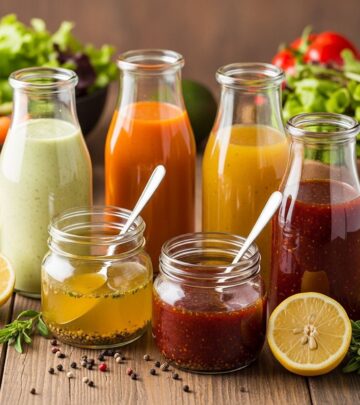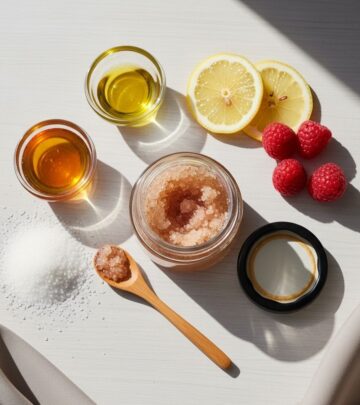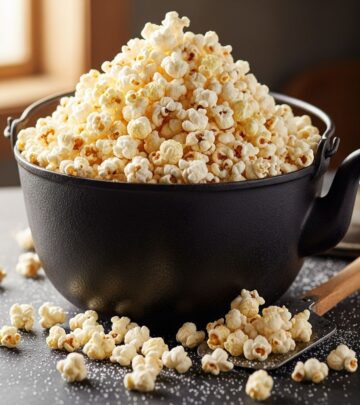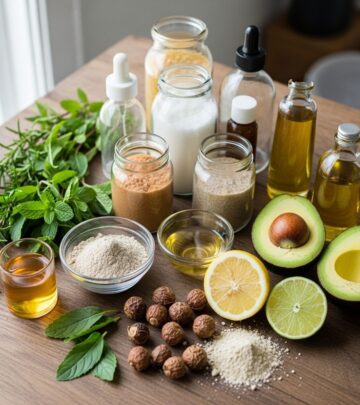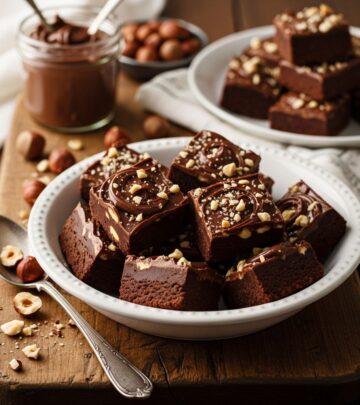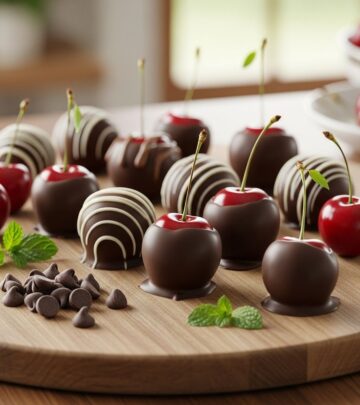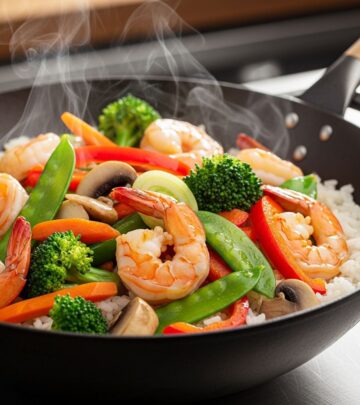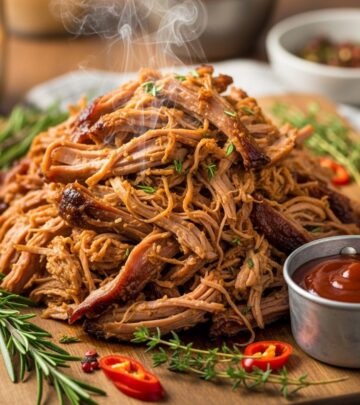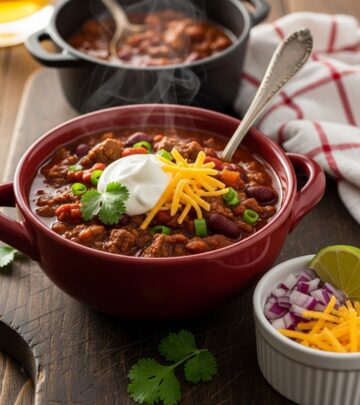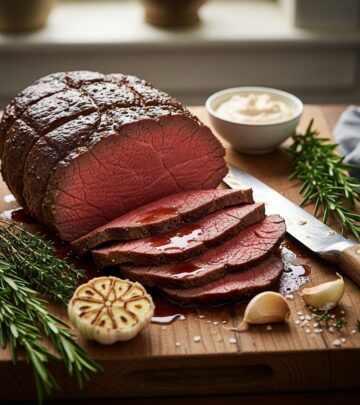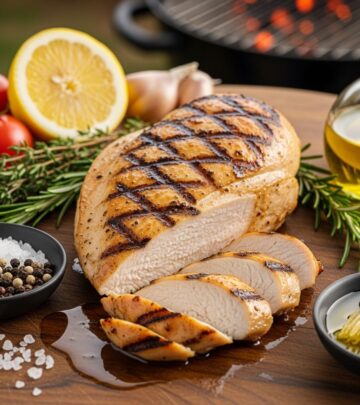Beer Braised Beef Short Ribs Recipe: Easy Step-By-Step Guide
Juicy flavors infused with rich malt and spices for an unforgettable meal experience.
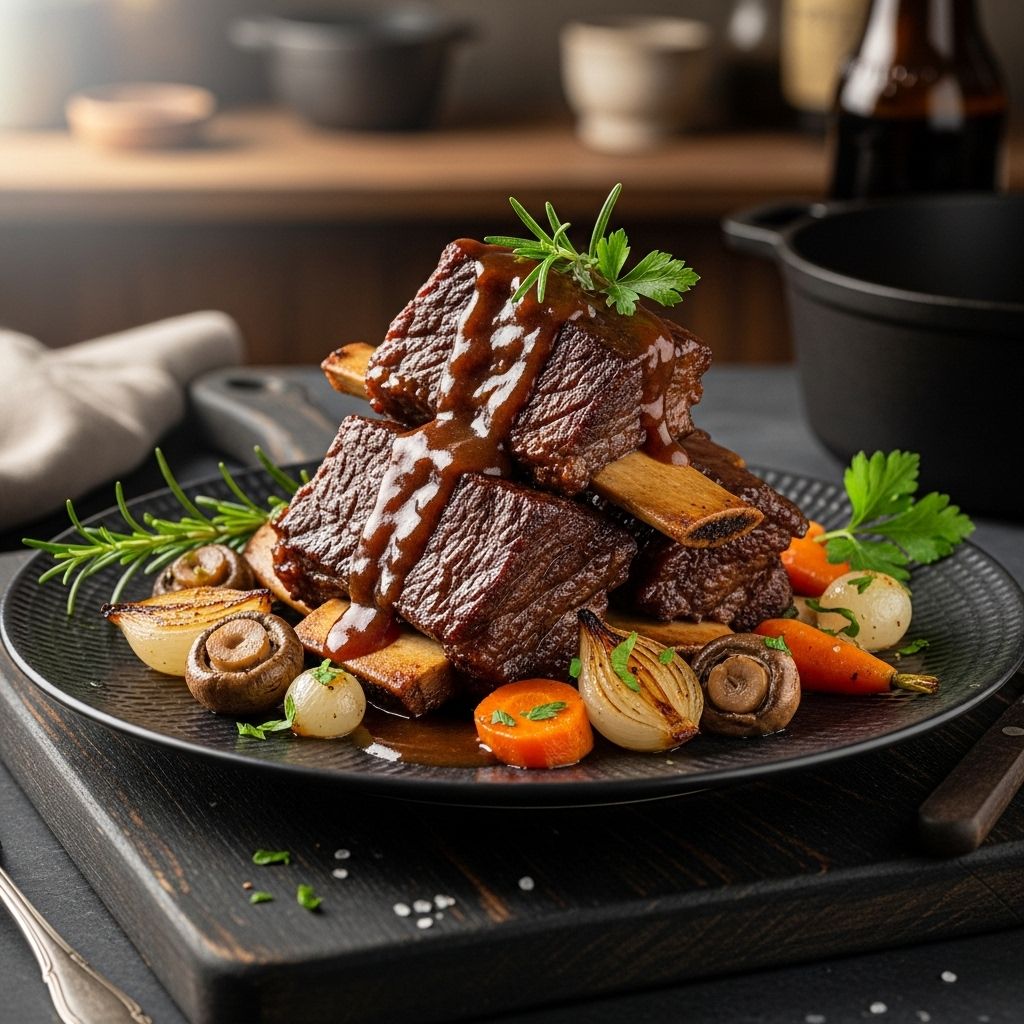
Image: HearthJunction Design Team
Simple Beef Short Ribs: A Tender, Beer-Braised Delight
There’s something magical about transforming tough, sinewy beef short ribs into a melt-in-your-mouth delicacy through the art of slow braising. This simple beef short ribs recipe harnesses the rich flavors of stout beer and beef stock to create a dish that’s both rustic and elegant. Perfect for Sunday family dinners, special occasions, or whenever you crave hearty comfort food that delivers on flavor without demanding complicated techniques.
As one enthusiastic home cook noted, ‘This was the best short rib recipe that I’ve made to date, and the leftovers were great for my beef tostada a few days later.’ That versatility is part of what makes this recipe so appealing – not only does it create an impressive main course, but any leftovers can be repurposed into equally delicious meals.
Understanding Beef Short Ribs
Before diving into the cooking process, let’s take a moment to understand what makes short ribs special. These cuts come from the beef chuck portion of the cow and contain sections of the rib bone surrounded by meat. They’re known for their rich marbling and tough connective tissue that, when cooked properly, breaks down to create an incredibly tender result with deep, beefy flavor.
Short ribs typically come in two main styles:
- English-cut: Cut parallel to the bone, resulting in a piece of meat with a single rib bone section
- Flanken-style: Cut across the bones, resulting in thin strips with multiple cross-sections of bones
This recipe works best with English-cut short ribs, which benefit tremendously from the low-and-slow braising method employed here.
The Magic of Braising
Braising is a cooking technique that combines dry and moist heat methods to transform tough cuts into tender, flavorful dishes. The process begins with searing the meat at high temperature to develop a flavorful crust through the Maillard reaction (that’s the scientific term for the chemical reaction that creates those delicious browned flavors). Then, the meat is gently simmered in liquid for an extended period, allowing collagen and tough connective tissues to break down into gelatin, resulting in that melt-in-your-mouth texture.
The combination of stout beer and beef stock in this recipe creates a deeply flavorful braising liquid. The beer adds complexity, slight bitterness, and natural sugars that help tenderize the meat, while the beef stock contributes savory depth. As these liquids reduce during cooking, they concentrate into a rich sauce that perfectly complements the ribs.
Why This Recipe Works
What makes this particular short rib recipe stand out is its simplicity. With just a handful of ingredients and straightforward technique, you can achieve restaurant-quality results. The key factors contributing to its success include:
- Proper seasoning: Salt and pepper penetrate the meat, enhancing its natural flavor
- Dredging in flour: Creates a better crust when searing and helps thicken the sauce
- Searing in both oil and butter: Combines the high smoke point of oil with the flavor of butter
- Aromatic base: Onions and garlic create a flavorful foundation
- Deglazing with stout: Captures all the browned bits from the bottom of the pan
- Long, gentle cooking: Allows tough connective tissue to break down completely
Ingredients You’ll Need
The beauty of this recipe lies in its simplicity. You’ll need:
- 1 pound beef short ribs
- 1 teaspoon salt
- ½ teaspoon ground black pepper
- 2 tablespoons all-purpose flour
- 1 tablespoon olive oil
- 1 tablespoon butter
- 1 onion, sliced
- 1 clove garlic
- 1 (12 fluid ounce) can or bottle stout beer
- 1 cup beef stock
This ingredient list is designed for 4 servings, but can be easily doubled or even quadrupled for larger gatherings. The recipe scales well without any adjustments to cooking technique, though you may need a larger Dutch oven or cooking vessel.
Essential Equipment
While this recipe doesn’t require specialized equipment, having the right tools will make the process smoother:
- Dutch oven or heavy-bottomed pot: The ideal vessel for braising, as it retains and distributes heat evenly
- Tongs: For easily handling and turning the ribs during searing
- Wooden spoon or spatula: To scrape up the flavorful browned bits from the bottom of the pot
- Measuring cups and spoons: For accurate ingredient portions
If you don’t have a Dutch oven, any heavy-bottomed pot with a tight-fitting lid will work, though cast iron or enameled cast iron produces the best results.
Step-by-Step Cooking Instructions
Preparation
Begin by gathering all your ingredients. Having everything measured and ready will make the cooking process much more enjoyable and efficient. Allow the short ribs to come to room temperature for about 30 minutes before cooking, as this promotes more even cooking and better browning.
Season and Dredge
Season the ribs generously with salt and pepper, making sure to cover all sides. This initial seasoning is crucial for developing depth of flavor throughout the meat, not just on the surface.
Next, dredge the seasoned ribs in flour until they’re lightly coated, then shake off any excess. The flour serves two purposes: it helps create a better crust during searing and will eventually help thicken the braising liquid into a silky sauce.
Sear the Ribs
Heat olive oil and butter in your Dutch oven or large skillet over medium-high heat. The combination of oil and butter gives you the high smoke point needed for proper searing along with the rich flavor of butter.
Once the fat is hot but not smoking, carefully add the ribs and cook until deeply browned on all sides, about 5 minutes per side. Don’t rush this step – proper browning develops flavor compounds that will infuse the entire dish. Work in batches if necessary to avoid overcrowding, which would cause the meat to steam rather than sear.
When properly browned, remove the ribs from the pot and set aside temporarily.
Build the Flavor Base
Add sliced onion and garlic to the same pot, cooking in the flavorful fat until the onion becomes tender and translucent, about 5 minutes. The aromatic vegetables will form the flavor foundation of your braising liquid.
Deglaze and Braise
Return the seared ribs to the pot, nestling them among the onions. Pour in the stout beer while using a wooden spoon to scrape up all those delicious browned bits from the bottom of the pot – this process, called deglazing, incorporates those concentrated flavors back into your dish.
Add the beef stock, which provides additional savory depth. The liquid should come about halfway up the sides of the ribs – not fully submerging them, as this is a braise, not a stew.
Bring the liquid to a gentle simmer, then reduce the heat to low. Cover the pot with a tight-fitting lid and allow the ribs to simmer very gently for about 2 hours. During this time, the tough connective tissue will break down, and the meat will become increasingly tender.
Check for Doneness
After about 2 hours, check the ribs for tenderness. Properly cooked short ribs should nearly fall off the bone when gently prodded with a fork. If they’re not quite there yet, cover and continue cooking, checking every 15-20 minutes until they reach the desired tenderness.
Serving Suggestions
These tender, flavorful short ribs pair beautifully with a variety of sides. Consider serving them with:
- Creamy mashed potatoes to soak up the rich sauce
- Buttered egg noodles for a comforting combination
- Roasted root vegetables for a hearty, complete meal
- Crusty bread to mop up every last bit of the delicious sauce
- A simple green salad with vinaigrette to balance the richness
When plating, spoon the sauce generously over the ribs and accompaniments. For an extra touch of elegance, consider garnishing with fresh herbs like parsley or thyme.
Make-Ahead and Storage Tips
One of the wonderful aspects of braised short ribs is that they often taste even better the next day, after the flavors have had time to meld. If preparing in advance:
- Cook the ribs completely, then cool and refrigerate in their sauce
- When ready to serve, remove the solidified fat from the top (this is easier when the dish is cold)
- Gently reheat on the stovetop over medium-low heat until warmed through
Leftover ribs will keep in the refrigerator for 3-4 days in an airtight container. They can also be frozen for up to 3 months. As one cook noted, the leftovers make excellent fillings for tacos, tostadas, or sandwiches.
Variations to Try
While this recipe is delicious as written, there are several variations you might enjoy:
- Herb-infused: Add sprigs of fresh thyme, rosemary, or bay leaves to the braising liquid
- Root vegetables: Include carrots, parsnips, or turnips during the last hour of cooking
- Wine-braised: Substitute red wine for the stout beer for a different flavor profile
- Tomato-enhanced: Add a tablespoon of tomato paste when sautéing the onions for deeper umami notes
- Spice-forward: Include whole spices like star anise, cinnamon stick, or cloves for an aromatic twist
Troubleshooting Tips
Even with a straightforward recipe, issues can arise. Here are solutions to common challenges:
- Tough meat: If your ribs are still tough after the recommended cooking time, they simply need more time. Continue braising until tender.
- Thin sauce: If your sauce is too thin, remove the ribs when tender and simmer the sauce uncovered until reduced to desired consistency.
- Too fatty: Make the dish a day ahead, refrigerate, and remove the solidified fat before reheating.
- Bland flavor: Add more salt, a splash of Worcestershire sauce, or a teaspoon of balsamic vinegar to brighten the flavors.
Nutritional Considerations
Beef short ribs are a rich, indulgent dish. While they provide excellent protein, iron, and B vitamins, they are also higher in fat than some other cuts. To create a more balanced meal, consider:
- Serving with plenty of vegetables
- Keeping portion sizes moderate
- Removing visible fat before cooking
- Skimming fat from the sauce before serving
Frequently Asked Questions
Q: Can I make this recipe in a slow cooker?
A: Yes! After searing the ribs and sautéing the vegetables on the stovetop, transfer everything to a slow cooker, add the liquids, and cook on low for 6-8 hours or until the meat is tender.
Q: What type of stout beer works best?
A: Guinness is a popular choice, but any stout will work well. Choose one with flavors you enjoy drinking, as those characteristics will infuse the dish.
Q: Can I substitute the beef stock with something else?
A: Chicken stock or vegetable broth can work in a pinch, though beef stock provides the best complementary flavor. You could also use water with beef bouillon.
Q: My ribs seem very fatty. Should I trim them?
A: You can trim excess external fat, but leave some for flavor. The internal fat will render during cooking and contribute to the rich mouthfeel of the dish.
Q: Can I double or triple this recipe?
A: Absolutely! The recipe scales up well. Just ensure you have a cooking vessel large enough to hold all the ingredients, and you may need to sear the meat in multiple batches.
With this comprehensive guide, you’re well-equipped to create tender, flavorful beef short ribs that will impress family and friends alike. The combination of simple ingredients and proper technique transforms an inexpensive cut into a memorable meal worthy of special occasions, while remaining accessible enough for weekend family dinners.
References
- https://www.allrecipes.com/recipe/162690/simple-beef-short-ribs/
- https://www.allrecipes.com/recipe/16256/braised-beef-short-ribs/
- https://www.allrecipes.com/recipe/237320/sherry-braised-beef-short-ribs/
- https://www.allrecipes.com/recipe/237049/fast-and-easy-slow-cooked-short-ribs/
- https://www.allrecipes.com/recipes/994/meat-and-poultry/beef/ribs/short-ribs/
Read full bio of Shinta

